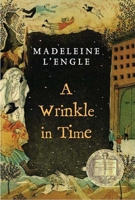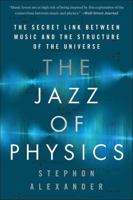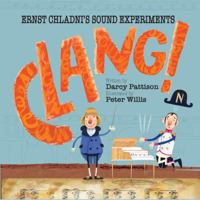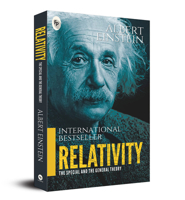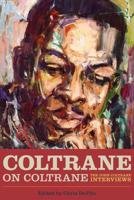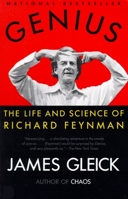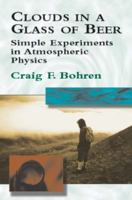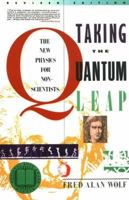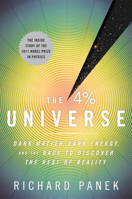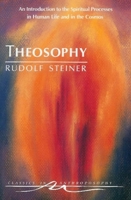The Science of A Wrinkle in Time
By Beth Clark • November 29, 2018
The Science of A Wrinkle In Time
You don't have to be an expert in theoretical cosomology or quantum physics to love Madeline L'Engle's A Wrinkle in Time, but if your insatiably curious sense of wonder is fascinated by the science of it, we're about to make your astrophysical day.
First, the Real Scientist Behind the Movie
To make A Wrinkle in Time believable on the big screen, director Ava DuVernay consulted with theoretical cosmologist Stephon Alexander, who is also a saxophonist and author of The Jazz of Physics: The Secret Link Between Music and the Structure of the Universe. Besides consulting on movies, Dr. Alexander's career has included teaching (he's currently an associate professor of Physics and Astronomy at Dartmouth), a TEDx talk, collaborating with Deepak Chopra for Cosmic Jazz & Quantum Consciousness, and won multiple awards. And that was just last Tuesday. Joking aside, Stephon Alexander is brilliant, talented, personable, and—pun intended—multidimensional. Given her beliefs that science, religion, and magic are all part of a single reality and structure in writing is structure in all life, Madeline L'Engle would approve.
Music, Math, and Physics
The concept of music, math, and the mysteries of the universe being connected is ancient, but the musical gist of the big band theory is that numbers determine how we hear sound and frequency ratios can be seen in wave images. It sounds complex, but you don't have to comprehend it to grasp that in the scene with Dr. Murry and young Meg watching sand bounce on a Chladni plate as it creates frequency patterns (dancing circular shapes), you're witnessing sound coming to life visually...Pythagoras meets Einstein meets Coltrane.
Quantum Physics: The Tesseract
Quantum physics is the theory that everything is made of waves, and also particles, making it possible for it to exist in multiple states simultaneously. Quantum = quantifiable/measurable, and therein lies the paradox: what is the wave doing while the particle is being measured (and vice versa)? If that almost makes sense but slips from your grasp right about the time you think you get it, don't worry. Just as Meg Murry doesn't entirely understand a tesseract—"For just a moment, I got it!" she says,—even Nobel Prize-winning quantum physicists don't fully understand it (which is why it's still theoretical).
In reality, a tesseract is a four-dimensional cube invented by mathematician Charles Howard as a visual explanation for time…the fourth dimension. Think of a tesseract being to a cube what a cube is to a square and it makes sense. In the story, "tessering" is the term for tearing through the space-time fabric folds to travel to other worlds by way of a fictional tesseract, or a wrinkle in time. The movie depicts it as a portal that people who vibrate at the frequency of love can use to embark on interdimensional time travel. (Fiction + physics = anything is possible, especially with love, so choose it when you can!)
Dr. Murry tessers by using a machine he invented to convert sound energy to light energy (sonoluminescence), which emits a specific frequency that triggers the device to warp space around him, creating a portal, or wrinkle in time, through which he travels to other worlds on the astral plane highway.
Geometry, Cosmology, and Meteorology: Mrs. Whatsit, Mrs. Who, and Mrs. Which
A fold in the space-time continuum is the shortest distance…unless we get blown off course by getting caught in a downdraft. Then we're talking atmospheric physics (meteorology) versus quantum physics (cosmology), and things get complicated.
Metaphysics: Mrs. Whatsit, Mrs. Who, and Mrs. Which
Mrs. Whatsit Mrs. Who, and Mrs. Which are celestial beings with all of the manifestation power you'd expect them to possess, so the overarching lesson for humans is that If you believe in yourself and you believe it's possible, you can think it, be it, dream it, make it, wear it, do it, say it, and overcome anything, even the IT…all it takes is faith that good will triumph over evil through love. (We're talking about you, Aunt Beast!)
Cosmology: Dark Matter: The IT
UC Berkeley Department of Astronomy's Theoretical Astrophysics Center says, "Theoretical cosmologists study the evolution and composition of the universe as a system, constructing theories and confronting them with experiments and observations." That means things like calculating and modeling the physics of the first objects in the universe or conducting numerical simulations of galaxy formations. You know, everyday stuff.
74% of the universe is made up of dark matter, which is energy that can't be detected, but scientists know exists because it doesn't emit light—or allow it to pass through. Unlike dark matter, the IT is dark energy of the evil entity type, and represents all of the greed, anger, pride, selfishness, and low self-esteem in the world. To stop it takes determination, optimism, smarts, and love...all things we already possess.
Social Science
A Wrinkle in Time was published over 50 years ago but shifting to social science for a moment, the timeless themes of good versus evil, light versus darkness, individuality versus conformity, the importance of self-acceptance, and the power of love are even more relevant today when viewed through the lens of collective consciousness. The world is divided, but those are the keys to freeing from the IT and bringing it back into the light…before we're doomed. (Collective conscience being another side of Carl Jung's collective unconscious, but that's another blog about a different book.)
But Wait, There's More
A Wrinkle in Time utilizes math, geometry, music theory, basic physics, quantum physics, astrophysics, cosmology, metaphysics, philosophy, psychology, and even theosophy. Its sci-fi/fantasy blend makes it so unique that it inspired the International Astronomical Union to name a crater on Mercury's south pole named "L'Engle." The book is one of the most frequently banned books of all time, and actually part of a quintet series, so if you haven't read the others, tesser on over and order them today. Oh, and follow us on Facebook so you can let us know what you think when you're finished!










